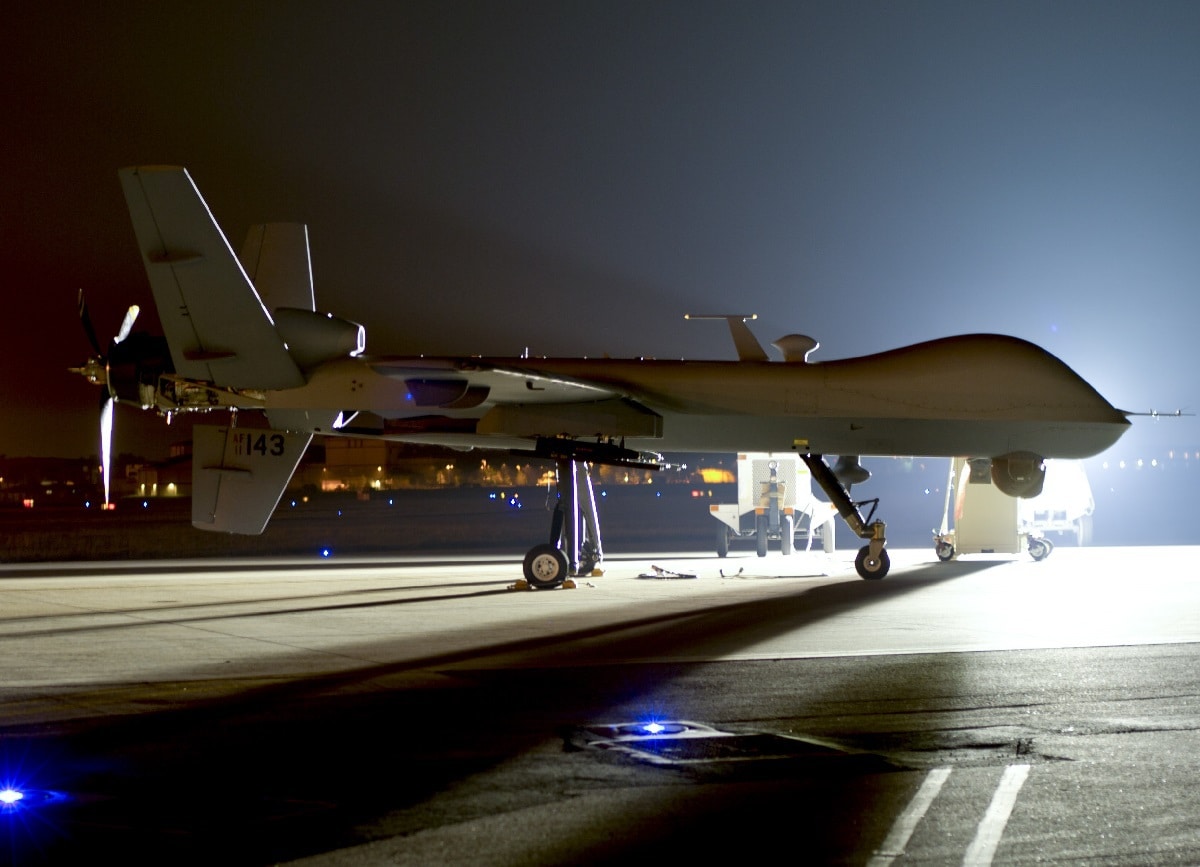Unmanned aerial systems (UAS) have proven to be game changers on the battlefield in Ukraine, able to strike targets remotely with deadly precision. These platforms can be used against forward operating bases, armored vehicle columns, and artillery positions without warning.
While smaller platforms, such as loitering munition systems including the Switchblade have aided the Ukrainian efforts, the United States Air Force’s MQ-9 Reaper remains its frontline armed drone. Designed to be a follow-up to the MQ-1 Predator, the Reaper can carry a great deal of ordnance, which allows it to fulfill the “hunter” component of a hunter-killer drone. Reapers can carry double the amount of Hellfire missiles that the Predator could carry, while the MQ-9 can also carry up to 500 pounds of bombs.
Even as the U.S. Air Force seeks to develop more autonomous and capable drones, the MQ-9 has continued to be updated and enhanced. In addition, the recent conflicts have shown how teams must work with, and recover the drones.
Emerald Flag Exercise
Earlier this month, the Air Force Special Operations Command’s Remotely Piloted Aircraft enterprise participated in an “Emerald Flag” exercise at Eglin Air Force Base (AFB), Florida, using the large-force event to demonstrate the Agile Combat Employment of MQ-9 Reaper aircraft anywhere in the world.
Emerald Flag is a multi-domain exercise conducted on the Eglin test and training range, which allows the Joint Force to connect air, land, sea, space, and cyberspace for the advancement of complex weapons systems.
During the recent Emerald Flag, members of the Air Force Reserve’s 2nd SOS and their active-duty counterparts in the 65th SOS integrated with MC-130H Combat Talon II and leveraged the wide range of capabilities presented by Mission Support Team specialists, both from Hurlburt Field. The training exercises focused largely on MQ-9 aircraft recovery operations, where MST members set up security and provided a communications station on the “deployed” airfield in support of the Reaper for the exercise.
Takeoff and Landing Training
The MQ-9 currently employs a Launch and Recovery Element consisting of infrastructure and ground crews at forward operating locations for takeoff and landing operations. The Emerald Flag exercise provided a different venue for AFSOC’s RPA community to once again demonstrate its Satellite Communications Launch and Recovery capability.
The SATCOM Launch and Recovery allowed the Mission Control Element to conduct ground operations, taxi, takeoff, and land via satellite communications without the need for a Launch and Recovery Element. Such capability could significantly reduce logistics and airlift requirements when the asset is forward deployed.
To demonstrate its enhanced range and reduced footprint, the MQ-9 performed Launch and Recovery at four separate airfields within 28 hours including Cannon AFB, New Mexico, and three bases in the Florida Panhandle including Eglin AFB Field 6, Duke Field, and Hurlburt Field.
Don’t Fear the Reaper
The MQ-9 Reaper, which is part of a remotely piloted aircraft system, can be employed primarily as an intelligence-collection asset and secondarily against dynamic execution targets. Given its significant loiter time, wide-range sensors, multi-mode communications suite, and precision weapons, it provides a unique capability to perform strike, coordination, and reconnaissance against high-value, fleeting, and time-sensitive targets.
In addition, the MQ-9 can perform a number of missions and tasks, including intelligence, surveillance and reconnaissance, close air support, combat search and rescue, precision strike, buddy-lase, convoy and raid overwatch, route clearance, target development, and terminal air guidance. The MQ-9’s capabilities make it uniquely qualified to conduct irregular warfare operations in support of combatant commander objectives.
Last year, the U.S. Air Force deployed an MQ-9 Reaper drone from Hawaii to Guam to test a countermeasure in the event of a Chinese attack on its airbases. The remotely piloted aircraft flew from Kaneohe Bay in Hawaii to Andersen Air Force Base, a distance of almost 4,000 miles, in support of Exercise Ace Reaper.
A Senior Editor for 1945, Peter Suciu is a Michigan-based writer. He has contributed to more than four dozen magazines, newspapers, and websites with over 3,000 published pieces over a twenty-year career in journalism. He regularly writes about military hardware, firearms history, cybersecurity, and international affairs. Peter is also a Contributing Writer for Forbes. You can follow him on Twitter: @PeterSuciu.

